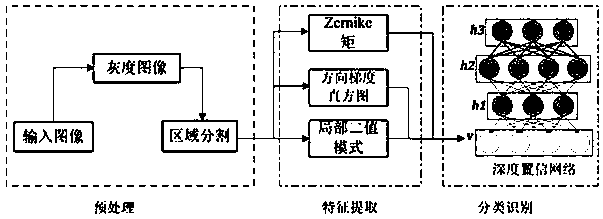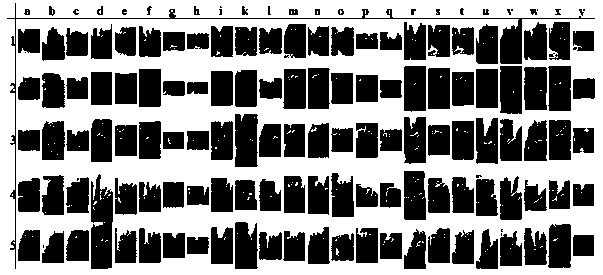Sign language recognition method based on deep belief network and multi-mode characteristics
A deep belief network and recognition method technology, applied in character and pattern recognition, biological neural network models, neural learning methods, etc., can solve problems such as information is not necessarily accurate, and a single feature cannot fully reflect image information, and achieve high recognition. rate effect
- Summary
- Abstract
- Description
- Claims
- Application Information
AI Technical Summary
Problems solved by technology
Method used
Image
Examples
Embodiment Construction
[0021] Such as figure 1 As shown, the sign language image sample library is established, the sign language image is preprocessed, the sign language area is separated from the sign language image, a variety of characteristic parameters of the sign language area are extracted, and multi-modal feature information that can express the sign language is synthesized. The contrastive divergence algorithm is used to train each layer of RBM, and the parameters of the model are adjusted according to the given training samples, so that the probability distribution of visible layer nodes represented by the RBM is consistent with the training data as much as possible under the parameters. According to the model parameters obtained through training, the samples to be classified can be identified.
[0022] The present invention adopts following technical scheme:
[0023] A sign language recognition method based on a deep belief network and multi-modal features, the steps are as follows:
[...
PUM
 Login to View More
Login to View More Abstract
Description
Claims
Application Information
 Login to View More
Login to View More - R&D
- Intellectual Property
- Life Sciences
- Materials
- Tech Scout
- Unparalleled Data Quality
- Higher Quality Content
- 60% Fewer Hallucinations
Browse by: Latest US Patents, China's latest patents, Technical Efficacy Thesaurus, Application Domain, Technology Topic, Popular Technical Reports.
© 2025 PatSnap. All rights reserved.Legal|Privacy policy|Modern Slavery Act Transparency Statement|Sitemap|About US| Contact US: help@patsnap.com



